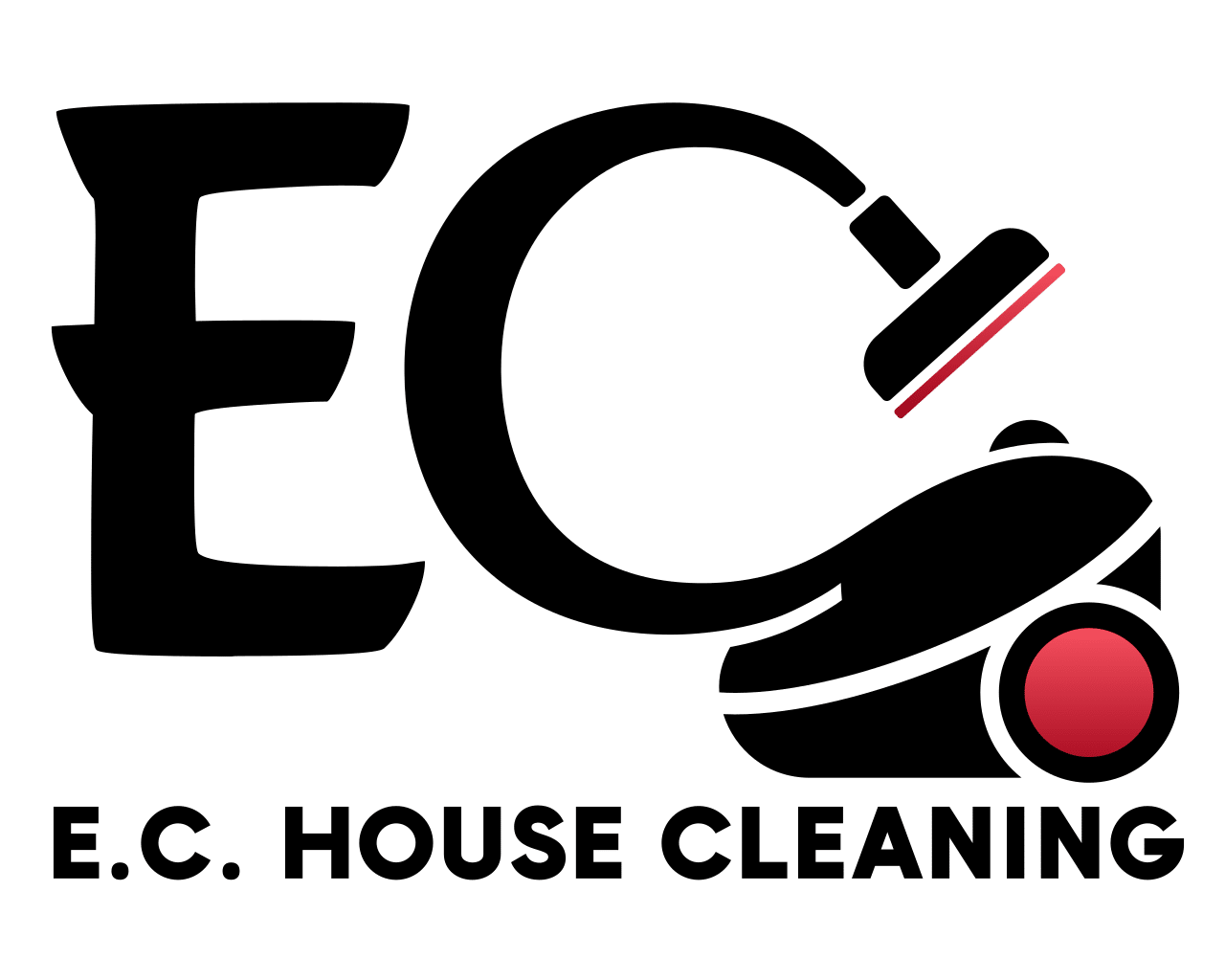When head lice find their way into your home, it might seem like you’re facing a nightmare. But here’s the good news: cleaning your house after a lice infestation is more straightforward than you think. Contrary to popular belief, you don’t need to turn your life upside down or spend a fortune to get your home lice-free.
The goal is to focus on the essentials – handling the personal items and areas the infested person has been in close contact with in the days leading up to treatment.
Cleaning Guide After Lice Infestation: How to Clean Your House After Lice?
- Wash and Dry: Use hot water (130°F) and a high heat cycle for all bedding, clothing, and fabric items.
- Vacuum: Floors, carpets, upholstery to collect lice and eggs.
- Soak Hair Brushes and Combs: Soak combs and brushes in hot water (at least 130°F) for 5-10 minutes to eliminate any lice or nits.
Lice can be a source of stress, but managing an infestation effectively means understanding that they cannot thrive without their human host. This fundamental fact simplifies the cleaning process significantly. Follow this concise guide to ensure you tackle the issue efficiently without adding unnecessary steps or worry.
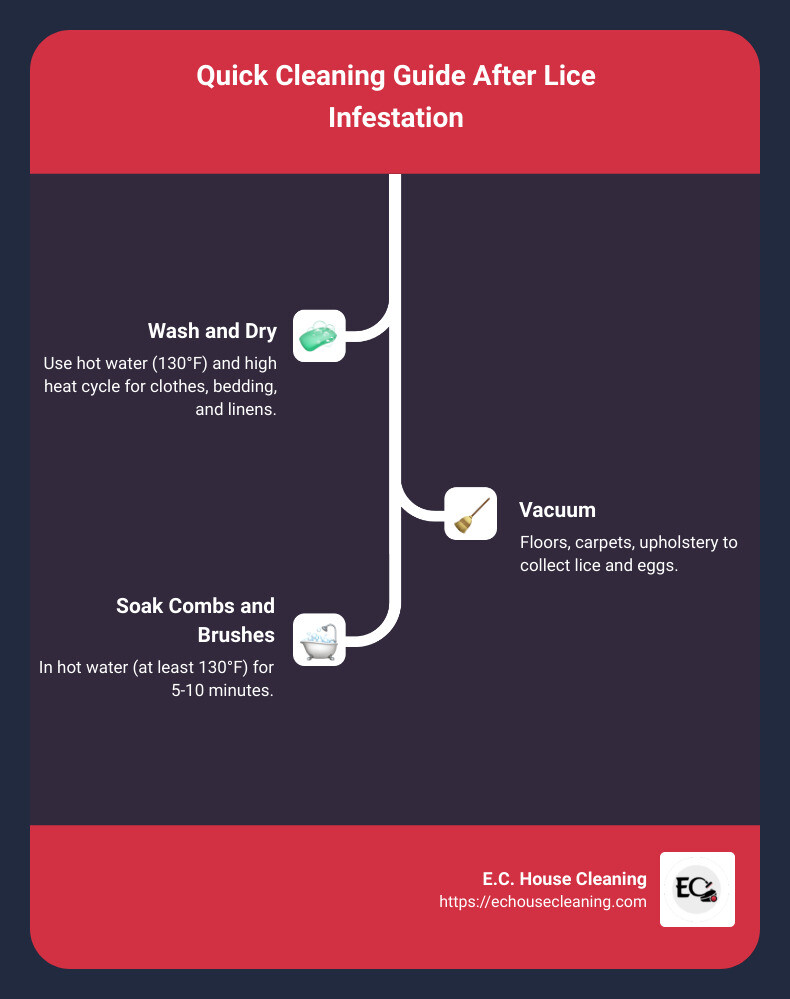
Table of Contents
Understanding Head Lice
When it comes to how to clean your house after lice, knowing your enemy is half the battle. Let’s break down the basics of lice: their life cycle, how they spread, and how long they can survive without a human host.
Life Cycle
Lice go through three stages: egg (nit), nymph, and adult. Nits are laid on hair shafts close to the scalp where the temperature is perfect for hatching. In about 9 to 10 days, these nits hatch into nymphs, which then mature into adults in about 7 days. Adults can live on your head for up to 30 days. It’s a fast cycle that can quickly lead to an infestation.
Transmission
Lice are expert hitchhikers. They move from one head to another with ease, usually through direct head-to-head contact. Indirect transmission via sharing hats, brushes, or pillows is less common but still possible. Lice can’t jump or fly; they crawl. This fact is crucial when considering how to prevent spread and what needs cleaning in your home.
Survival
Off the human head, a louse’s life is short-lived. They can only survive for 24 to 48 hours without blood meals from the scalp. Nits, on the other hand, are more resilient but will not hatch if kept away from the warmth of the scalp for over a week. This information is vital because it means you don’t need to treat your entire house like a biohazard zone.
Concentrating your cleaning efforts on areas where direct head contact is likely or where items worn or used by the infested person have been is more efficient and effective.
Key Takeaways: Head Lice Survival Cycle
- Life Cycle: Understanding the rapid life cycle of lice highlights the importance of quick action.
- Transmission: Knowing lice spread through direct contact informs us about what items and areas need the most attention during cleaning.
- Survival: Realizing lice and nits can’t survive long off the scalp reassures us that not every inch of the house is at risk.
Armed with this knowledge, you’re better prepared to tackle lice head-on, focusing your cleaning efforts where they’re most needed and avoiding unnecessary panic and work. Next, we’ll dive into the pre-cleaning steps to isolate and treat the infestation before moving on to the nitty-gritty of cleaning.
Remember, knowledge is power. Understanding lice helps you fight them more effectively and keeps your home clean and safe for everyone.
Pre-Cleaning Steps
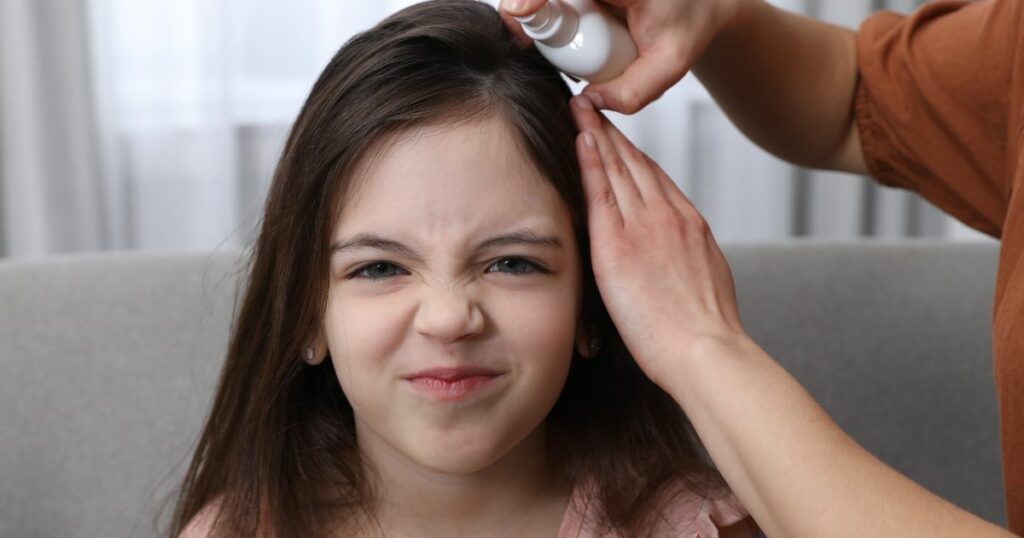
Before you grab your cleaning supplies and dive into the deep end, let’s take a step back. The first line of defense against head lice in your home starts with Identification, Isolation, and Treatment. These steps are crucial in ensuring an effective cleaning process and preventing re-infestation. Here’s how to tackle them:
Identification
The first sign of lice isn’t always the itch—it’s spotting them. Lice are tiny and fast, making them hard to see. Use a fine-tooth comb and check everyone’s head under bright light. Look for tiny, sesame seed-sized bugs or their eggs (nits) glued to hair strands, especially around the ears and nape of the neck. If you find lice or nits, it’s time to take action.
Isolation
Once you’ve identified lice on a family member, it’s important to isolate their personal items. Gather all clothing, bedding, and stuffed animals used by the infested person in the last 48 hours. This prevents the lice from spreading to other items or areas of your home. Lice can’t jump or fly—they spread through direct contact. By isolating items, you’re cutting off their escape routes.
Treatment
Treating the infested person is a critical step before cleaning your house. Over-the-counter or prescription lice treatments are effective in killing lice and nits. Follow the instructions carefully. Some treatments require a second application after a week to kill any newly hatched lice. During this time, use a lice comb to remove dead lice and nits from the hair.
Treating the human hosts effectively reduces the chance of lice spreading back from the person to cleaned areas. As the Centers for Disease Control and Prevention (CDC) advises, focus on treating the person first and foremost. This approach minimizes the need for extensive cleaning efforts and ensures that you’re tackling the problem at its source.
By following these pre-cleaning steps of Identification, Isolation, and Treatment, you’re setting a solid foundation for a lice-free home. It’s not just about how to clean your house after lice; it’s about taking comprehensive steps to ensure the infestation is dealt with effectively, avoiding unnecessary panic and work. With these measures in place, you’re ready to move on to the key areas that need cleaning and the best techniques to use.
Key Areas to Clean
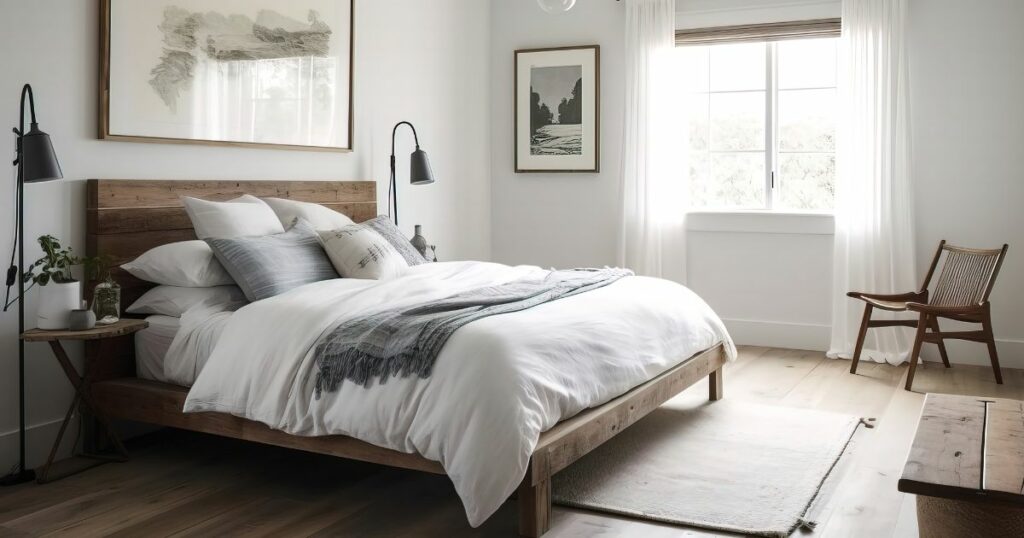
After identifying and treating lice in your household, the next step is focusing on how to clean your house after lice. It’s essential to target the areas where lice and their eggs (nits) are likely to reside or have come into contact with. Let’s break down the key areas you should clean: Bedding, Clothing, and Furniture.
Bedding
Bedding is a prime spot for lice and nits to linger after an infestation.
- What to do: Wash all bedding, including sheets, pillowcases, and blankets, in hot water and then dry them on a high heat cycle. This process kills any lice or nits that may be present.
- Remember: It’s not just about the bedsheets. Don’t forget to clean any bed covers, mattress pads, and even the pillows if possible.
Clothing
Clothing that has been worn recently or has come into direct contact with the infested person needs attention.
- What to do: Just like with bedding, wash the clothing in hot water and use a high heat drying cycle. This includes shirts, pants, hats, scarves, and any outerwear.
- Tip: For items that can’t be washed, placing them in a sealed bag for two weeks or dry cleaning are effective alternatives.
Furniture
Lice can fall off a person and land on furniture, making it a potential area for lice to survive for a short period.
- Vacuuming: Thoroughly vacuum all furniture, including sofas, chairs, and even car seats. Focus on the areas where the infested person’s head may have had contact.
- For non-washable items: Items like throw pillows that can’t be easily washed should be placed in the dryer on high heat for at least 30 minutes or sealed in a bag for a couple of days.
By targeting these key areas with the right cleaning techniques, you can ensure that your home is thoroughly cleaned after a lice infestation. The goal is to eliminate any lice or nits that have strayed away from the human host and to prevent them from causing a reinfestation.
Next, we’ll look into the specific cleaning techniques in more detail, including the best practices for washing and drying, vacuuming, handling items that can’t be washed, and the proper way to clean combs and brushes.
Cleaning Techniques
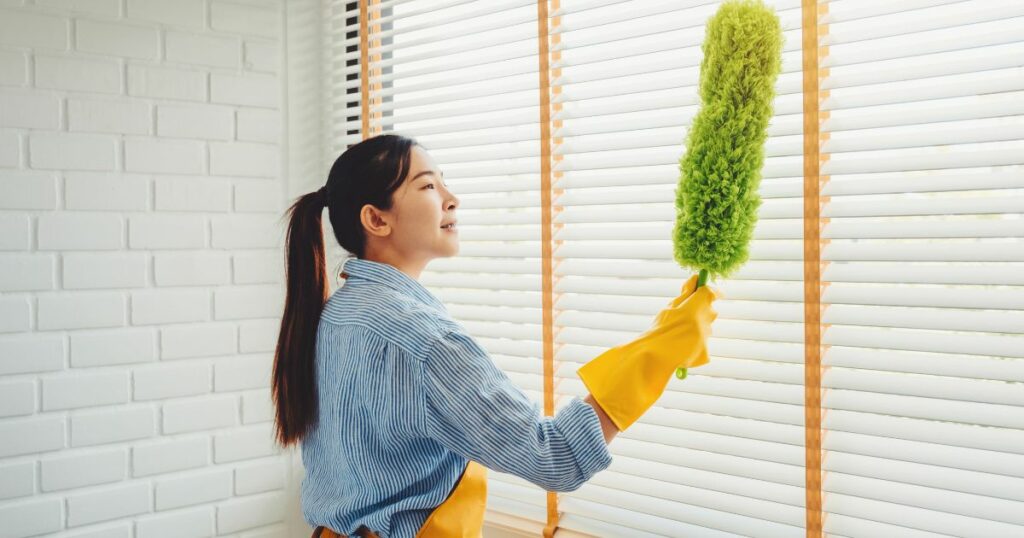
When it comes to how to clean your house after lice, there are several effective techniques you can apply to ensure your home is lice-free. Let’s break down these methods to make the process to remove lice as straightforward as possible.
Washing and Drying
The first step in your cleaning journey involves tackling all washable items. This includes bedding, clothing hair accessories, and any fabric that has come into contact with the infested individual.
- Hot Water: Use the hottest water setting available on your washing machine. Lice and their eggs cannot survive temperatures above 130°F (54.4°C).
- High Heat Cycle: After washing, transfer items to the dryer and use the highest heat setting for at least 20 minutes. The combination of hot water and high heat effectively kills lice.
Vacuuming
Next, focus on areas of your home that can’t be tossed into the wash.
- Carpets: Thoroughly vacuum all carpets in your home. Pay special attention to the areas where the infested individual spent a lot of time.
- Upholstery: Use the vacuum’s upholstery attachment to clean sofas, chairs, and other fabric-covered furniture.
Items That Can’t Be Washed
For items that cannot be washed or are too delicate:
- Sealing in Bags: Place these items in airtight bags for two weeks. Without a host, lice will die within 1-2 days, but sealing items for two weeks ensures that any eggs also die once they hatch.
- Dry Cleaning: Alternatively, items can be taken to a dry cleaner. Inform the cleaner of the lice issue so they can take appropriate precautions.
Hair Brushes and Combs
Don’t forget about the small items that come into close contact with hair.
- Soaking in Hot Water: Detach all hair from combs and brushes, then soak them in water that’s at least 130°F (54.4°C) for 10 minutes. This high temperature will kill lice and nits.
By following these specific cleaning techniques, you can ensure your home is thoroughly cleaned after a lice infestation. The key to effective lice management is not just treating the individual but also addressing the environment they live in. With these steps, you’re well on your way to a lice-free home.
Preventative Measures
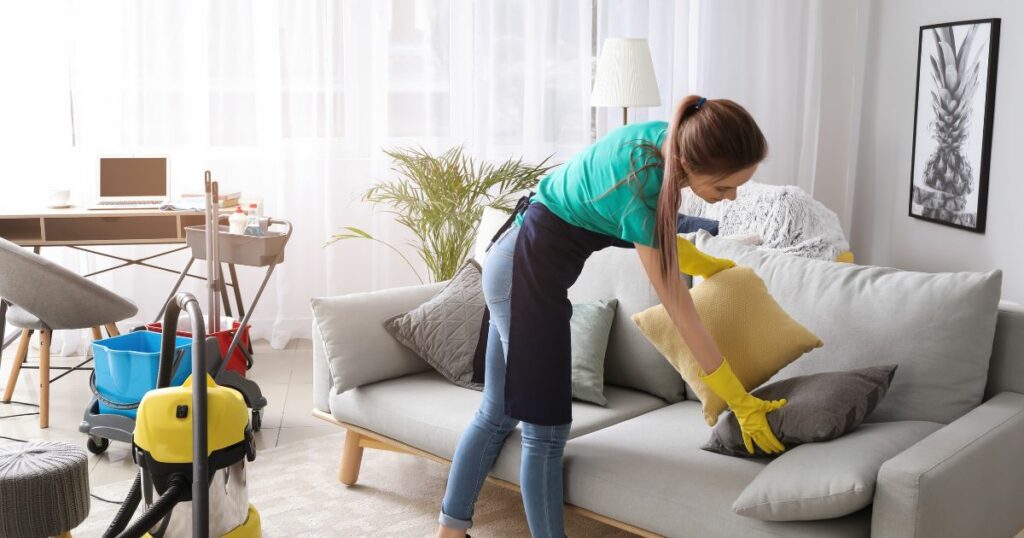
Preventing a lice infestation from happening again is just as important as cleaning your house after lice. Here are some simple yet effective ways to keep lice at bay:
Avoiding Head-to-Head Contact
Lice spread mainly through direct head-to-head contact. Educate your family, especially children, about the importance of not touching heads with others. This includes during play, taking photos, or sharing seats where heads rest closely, like in a car or on a couch.
Regular Checks
Make it a routine to check each family member and child’s hair for lice and nits, especially if there’s been a recent outbreak in your community or school. Doing this at least once a week can help catch an infestation early, making it easier to manage.
Educating Family Members
Knowledge is power. Talk to your family about what lice are, how they spread, and why it’s important to avoid sharing personal items like hats, scarves, and hairbrushes. Understanding the basics of lice can help everyone play a part in preventing them.
- Head-to-Head Contact: Explain why it’s important to avoid this common way lice spread.
- Personal Items: Teach family members not to share items that touch the head.
- Regular Hair Checks: Show them how to do a simple lice check at home.
Lice are a common issue and nothing to be embarrassed about. Open communication and taking these preventative measures can help keep your family lice-free. With these steps, you’ll not only know how to clean your house after lice but also how to prevent another infestation from happening.
Moving on to the next section, we’ll address some frequently asked questions about house cleaning after lice, providing you with even more insights and tips to maintain a clean, lice-free environment.
Conclusion
We’ve journeyed through the necessary steps on how to clean your house after lice, focusing on practical, efficient strategies that don’t break the bank or your back. From hot water washing to vacuuming and sealing items in bags, we’ve covered a gamut of techniques to ensure your home becomes lice-free without resorting to extreme measures.
At E.C. House Cleaning, we understand the stress and urgency that comes with a lice infestation. That’s why we emphasize simple yet effective cleaning methods that are backed by research and experts. Lice cannot survive long without their human host, which means your home can be quickly reclaimed with the right approach.
Preventative measures are equally important. Educate your family members on avoiding direct head-to-head contact and conduct regular checks, especially if someone in your community reports a lice outbreak.
Let us take the stress off your shoulders. Contact us today for a clean, comfortable, and lice-free home. Together, we can overcome and kill any lice or challenge, ensuring your family’s environment is safe and healthy.
FAQs on House Cleaning After Lice
When it comes to understanding how to clean your house after lice, many questions can pop up. Let’s tackle some of the most common queries to clear up any confusion and ensure you’re well-prepared to keep your home clean and lice-free.
Do I need to use insecticides?
No, you don’t need to use insecticides for cleaning your house after a lice infestation. According to the CDC, head lice cannot survive long if they fall off a person and cannot feed. This means that spending a lot of time and money on housecleaning activities, including using insecticides, isn’t necessary. Simple cleaning methods, such as washing, vacuuming, and drying at high temperatures, are effective.
How long do lice survive off the head?
Head lice have a short survival span once they are not on a human host. They survive less than 1–2 days if they fall off a person and cannot feed. Nits, or lice eggs, also cannot hatch and usually die within a week if they are not kept at the same temperature as that found close to the human scalp. This fact emphasizes the importance of focusing on cleaning items that were in direct contact with the infested person rather than worrying about every corner of your house.
Can lice infest pets?
No, lice cannot infest pets. Lice are human-specific parasites and do not transfer between humans and animals. Your pets are not at risk of getting lice from you or your family members, nor can they spread lice. This means there’s no need to treat your pets or their bedding if someone in your home has head lice.
With these FAQs addressed, you’re now equipped with key knowledge on how to clean your house after lice, ensuring a clean and comfortable environment for you and your family. The focus should be on the immediate surroundings of the infested person, and there’s no need for extensive or expensive cleaning methods to effectively rid your home of lice.
Moving on to the next section, we’ll wrap up our guide with a conclusion, summarizing the essential steps and tips for maintaining a lice-free home with the help of E.C. House Cleaning.
Our Content
All content is written by E.C. House Cleaning’s professional residential moving cleaners. We put our expertise in house cleaning services into each piece of content, focusing on providing valuable, accurate, and relevant information. With over 20 years of deep, full cleaning service industry experience in the Massachusetts and Boston area with a proven track record of pet-friendly cleaning services in Massachusetts and trust for customers as signaled by our hundreds of 5-star reviews, E.C. House Cleaning is an authority on residential and commercial cleaning services.
